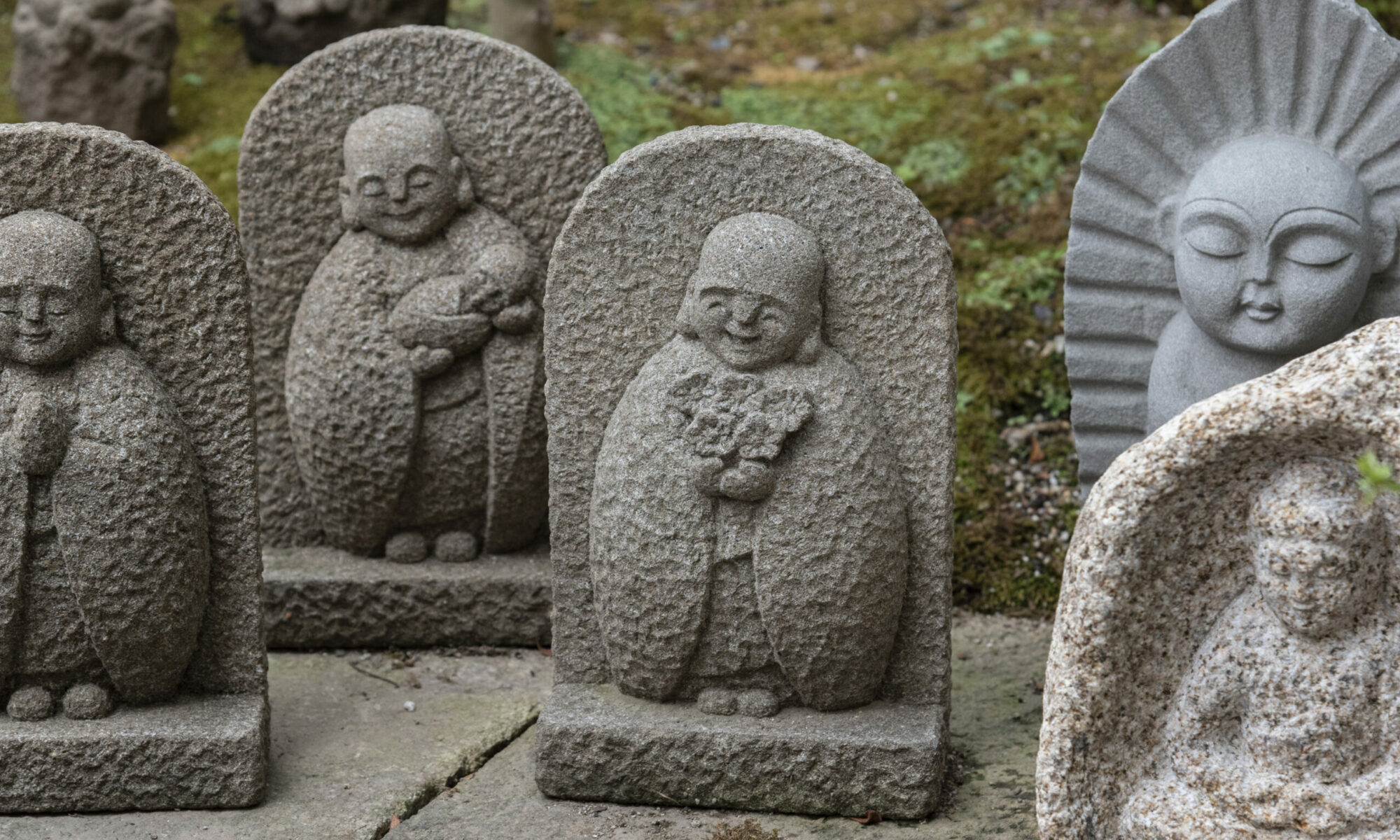In Japanese tradition, the northeast direction (Ushitora, or Ox and Tiger) is considered unlucky. It’s believed that demons, or evil spirits, enter and exit from this direction, making it an inauspicious one. The opposite direction, southwest (Hitsujisaru, or Sheep and Monkey), is also considered problematic and is called the ura-kimon. While often thought of as simply bringing bad luck, the northeast direction is actually believed to be a powerful force for change—for better or worse. Addressing this direction properly is said to bring unexpected positive results.
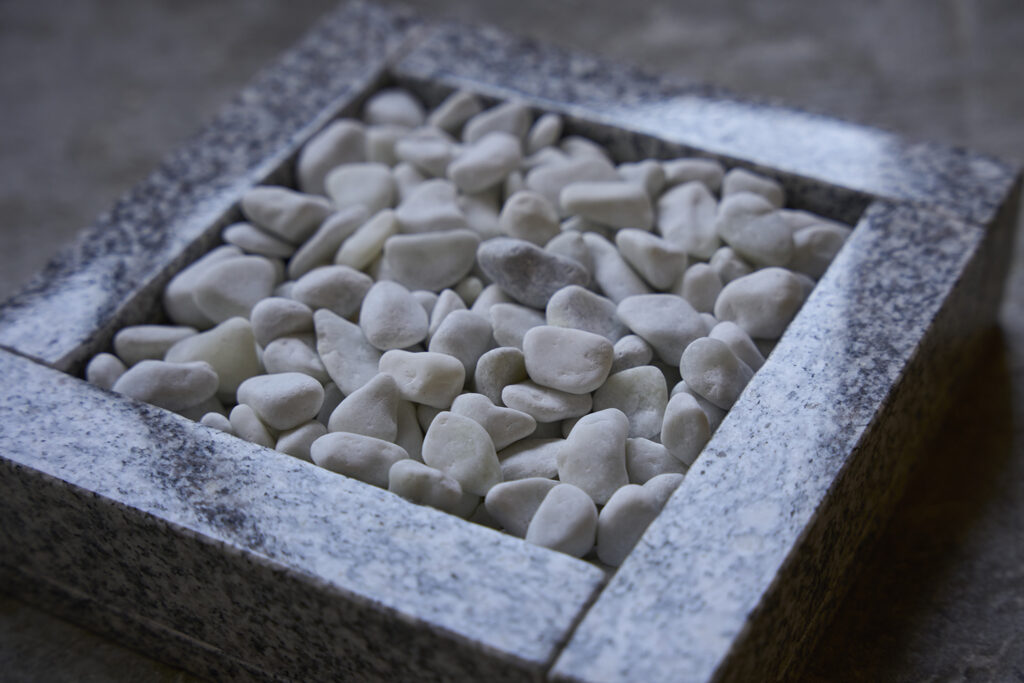
History of Evil Spirits
The idea of evil spirits originates from ancient Chinese feng shui, a practice that seeks to harmonize energy (qi) in spaces. This concept later influenced Japan and evolved with native traditions such as onmyōdō (a system of divination practiced by court mystics) and Shinto (Japan’s indigenous belief system centered on kami, or spirits). During the Heian period (794–1185), people believed that illnesses and disasters were caused by the curses of gods, who were often feared as demonic forces.
Kyoto, where ISHIMO’s store is located, has deep ties to the culture of Kimon—a directional concept in onmyōdō referring to the “demon gate” in the northeast. When Kyoto was established as Heian-kyō (Japan’s imperial capital) in 794, spiritual precautions were taken to guard the city. To protect it, Enryaku-ji Temple was built on Mount Hiei in the northeast Kimon to ward off malevolent forces, while Iwashimizu Hachimangū Shrine was placed in the southwest Ura-Kimon.
Even today, Kyoto still has evidence of these beliefs. The Kyoto Imperial Palace, was designed with one unusual feature: its surrounding wall lacks a northeast corner. Instead, a recess called Sarugatsuji (“Monkey Corner”) was created, with a carved wooden monkey placed under the eaves. This is because, in the Chinese zodiac, monkeys are opposite the Ox and Tiger making them symbols of protection against evil.
Kyoto’s Traditions: Kimon and Everyday Life
In Kyoto, great care is taken to ensure that the Kimon—the “demon gate,” remains clean, well-ventilated, and bright. Whether aristocrats or commoners, people throughout history have sought to live in harmony with these spiritual forces. Even today, as you walk through Kyoto, you can see traces of Kimon warding, the practice of protecting buildings from bad fortune. One of the most common methods is the cornerstone for warding off evil spirits, where square stones are placed in the northeast section of a home or building, and white gravel is spread around these stones to create a sacred space, transforming the area into one of positive energy.
Other traditional protective measures include planting nandina (heavenly bamboo), a plant thought to absorb misfortune and transform it into good fortune. Some homes also feature onigawara—decorative roof tiles, often shaped like fierce demon faces—to ward off evil. These subtle yet meaningful details reflect Kyoto’s connection to its spiritual heritage, blending ancient traditions with the modern city.
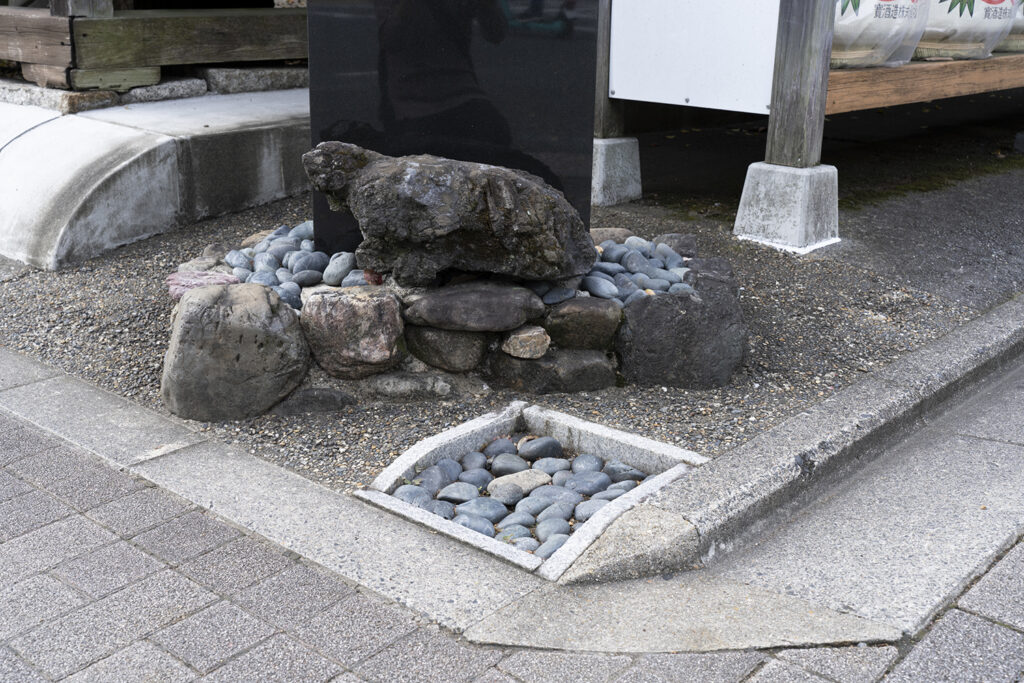
ISHIMO’s Original Cornerstone for Warding Off Evil Spirits
ISHIMO’s cornerstones for warding off evil spirits are inspired by traditional designs and crafted from natural stone. We offer three distinct stone types: white granite, black granite, and Japanese Aji stone. To complete the sacred space, you can choose from two types of gravel: Shirakawa gravel or white jade stone. Unlike artificial materials, natural stone carries a unique presence—its weight, texture, and quiet strength can be felt through all five senses.
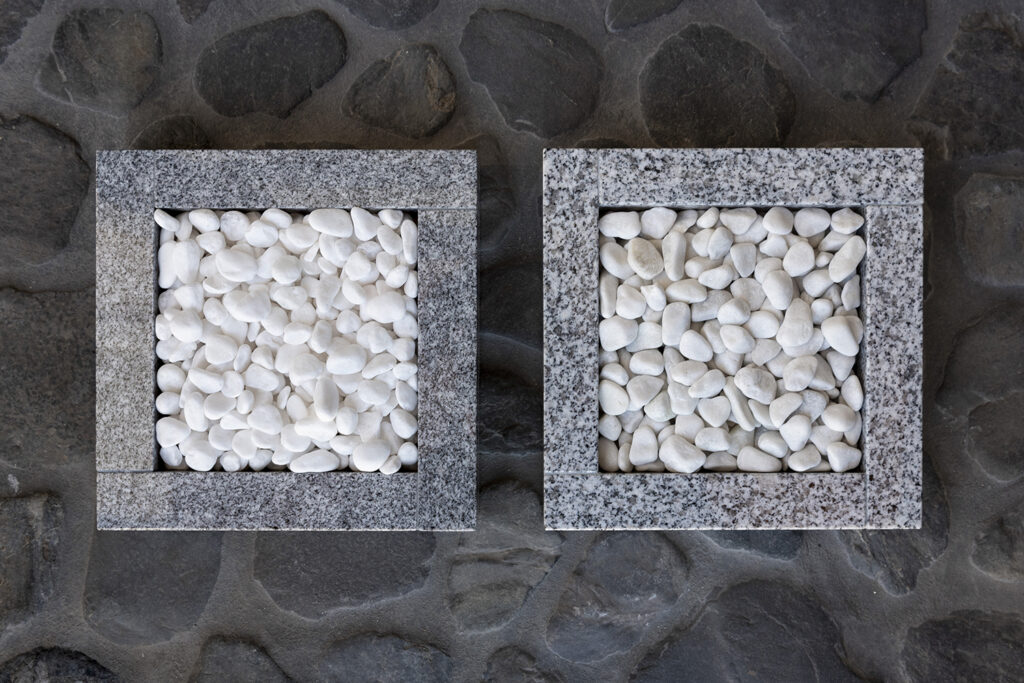
Datekanmuri’s Stone to Ward Off Evil Spirits
ISHIMO offers Kimon-warding stones inspired by the traditional onigawara. Our design emphasizes the classic expression of the demon, with intricate attention to detail. From the flowing, dynamic fur to the piercing eyes and curved mouth, each element is carefully sculpted to create a sense of movement. Unlike traditional roof tiles, our Kimon-warding stones have a more substantial and commanding presence, bringing an air of strength to any space.
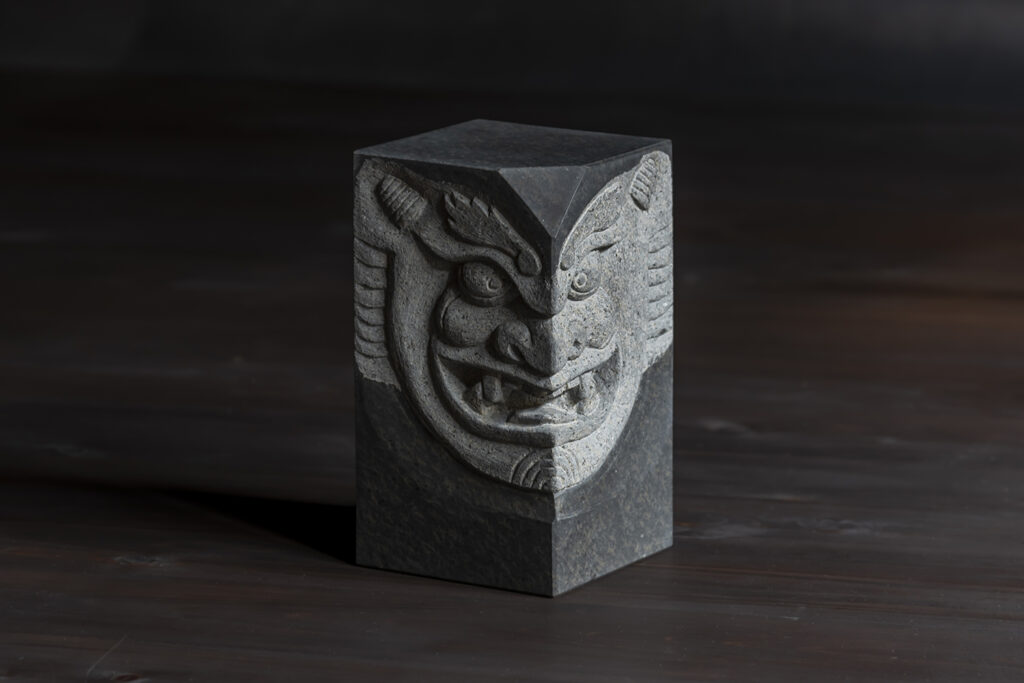
Embedded Demon-Warding Stone
This demon-warding stone is designed to be embedded in the ground, providing lasting protection. Featuring a large, boldly carved demon face, it commands attention with its powerful expression, making a striking piece in any setting.
Ideal for gardens, home entrances, or storefronts, this piece adds a unique and formidable aesthetic to your space.
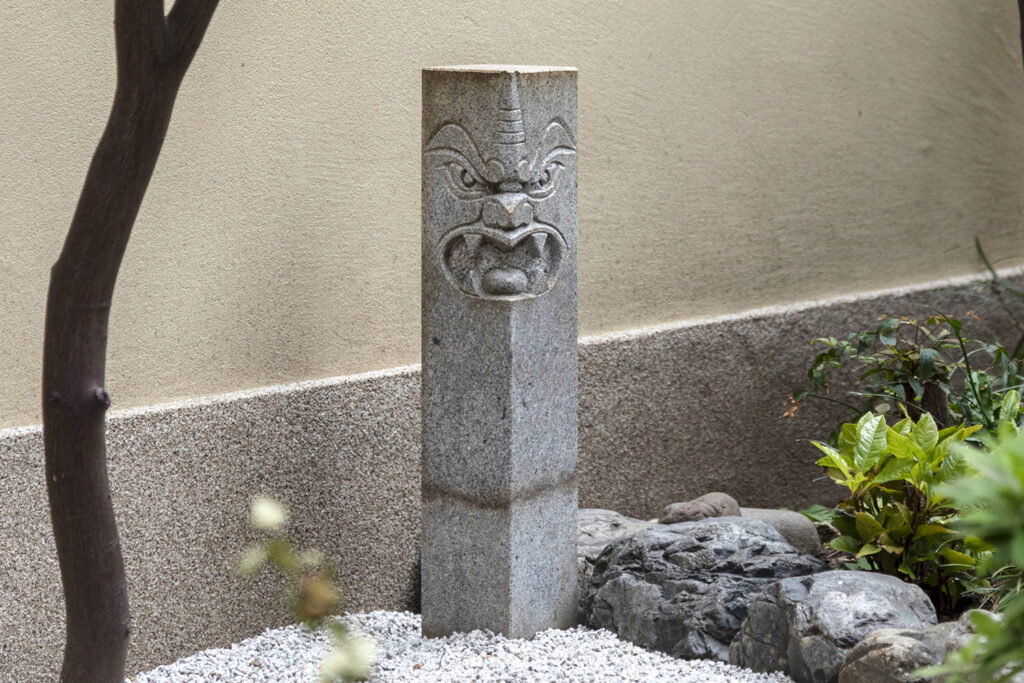
Pray for peace in your home and infuse your intentions into the stone. By embracing this ancient Kyoto tradition in the modern era, you may find a deeper appreciation for your space and your surroundings.
→Kimon-warding corner stone – white page
→Kimon-warding corner stone – white (large) page
→Kimon-warding corner stone – Aji stone page
→Kimon-warding stone – Datekanmuri stone page
→Kimon-warding stone page
